Building an engine for your ride isn’t exactly cheap or easy right now thanks to supply chain issues, so if you’re after a quick and simple solution, a brand-spanking-new crate motor could well be the ticket. After all, we live in a time where manufacturers will happily sell you the biggest, baddest muscle car engine they make, brand new and with a warranty. GM, Ford and Chrysler have all upped their aftermarket speed parts game over the past 20 years, arguably thanks to the success of the LS crate engines.
While the LS and earlier Gen I SBC will likely always form a part of GM’s crate motor family, lately the company has been pushing the Gen V LT direct- injection crateys, as the number of production cars running LS mills dries up. This has caused prices of some LS variants – such as the supercharged 6.2-litre LSA and naturally aspirated LS3 – to spike as supplies dwindle. Supply chain issues have also affected the number of engines on shelves across all brands, so it is best to ask if a donk is in stock before slapping your hard-earned down.
Matt Telford of Eagle Auto Parts has been on the frontline of these delays.
“People are waiting for blocks, cranks, pistons, valves, circuit boards and chips, and everyone is in the same boat, really,” he says. “It has also been good to see Australian companies support each other through this time.”
When it comes to crate motors, Matt says there are two types of customers: “You have the people building a driver type of car, and then you have the customers who want specific ETs and want to tear the tyres off it with big power. We cater to both markets.”
Eagle is renowned for stocking a crazy range of crate motors, including rarities like an HSV W1-spec LS9 and a C4 Corvette ZR1 quad-cam LT5, so it was interesting to hear Matt say that the old-school Vortec engines remain the company’s best-selling crate mills. “LS is still king [of the late-model motors], as they’re easy horsepower, but LT will eventually take over,” he says.
The great news is there are plenty of options out there for anybody wanting a simple way to repower their project car. We run through some these below.
LS3
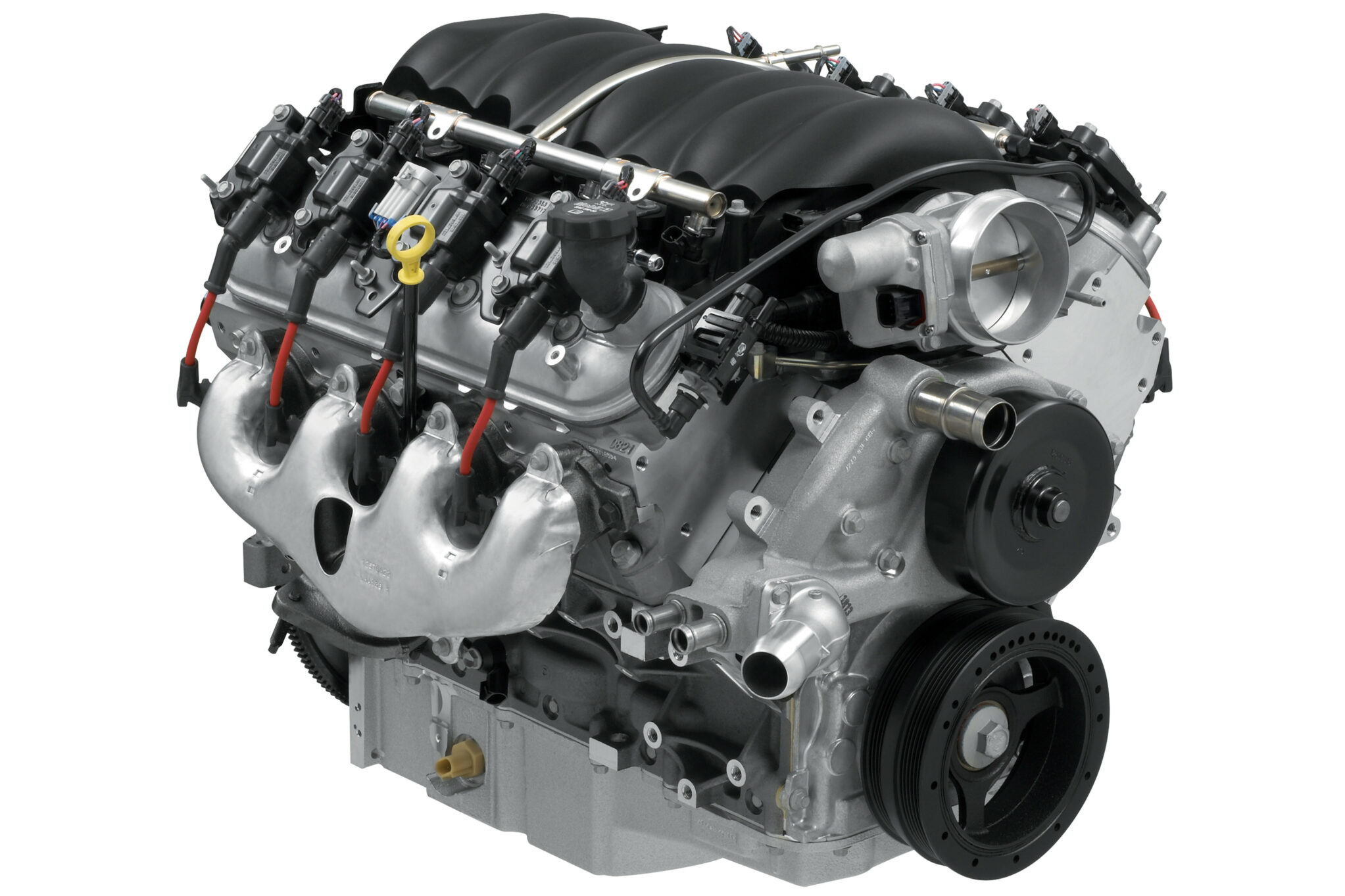
Used in late-model Corvettes, Camaros, HSVs and VF Series II Commodores, the 6.2-litre LS3 is one of GM’s best small-block engines. Thanks to its alloy architecture, it weighs in at just 183kg yet packs a nodular-iron crank, six-bolt mains, aluminium slugs and a generous 103mm x 92mm bore size. But the real party starts up top thanks to the deep-breathing, rectangle-port cylinder heads.
The LS3 scores lighter-weight, larger valves than its Gen IV brethren, as well as an improved 1.7:1 rocker ratio. However, a major weakness of all LS engines is the needle roller bearings in the factory rockers, which can fail and fill the engine with debris.
Packing 430hp in production form, Chevrolet Performance now sells a dizzying number of aftermarket LS3 variants under the LS376 branding, including 480hp, 515hp and two different 525hp variants. These higher-horsepower options come set up with higher-lift camshafts designed for racing, though they do come at a cost.
Previously available for as little as $7000, we’re now seeing supply chain issues drive LS376 prices up over $15K. As the number of new cars still using these engines end their runs, GM has said it’s going to move the bulk of crate motor supply over to Gen V LT-series engines.
SPECS
Capacity: 376ci
Block material: Alloy
Compression: 10.7:1
Power: 435hp
Torque: 425lb-ft
Blower: N/A
What’s hot
| What’s not
|
LSA
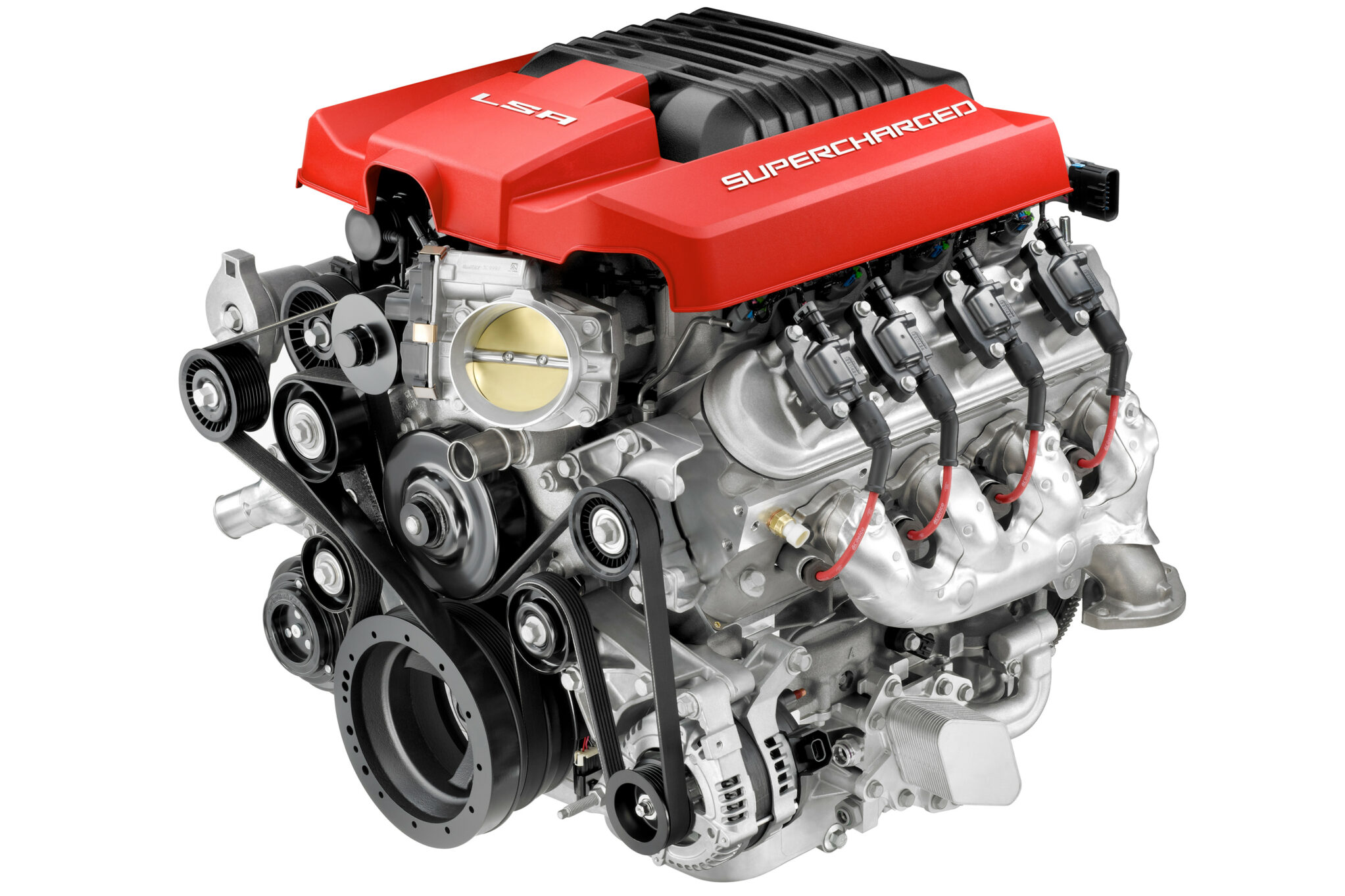
A 6.2-litre Gen IV LS inflated to 556hp with the aid of a top-mounted blower, the LSA has the same lightweight six-bolt alloy block as its aspirated brethren, but with some key differences internally. A forged steel crank with a unique eight-bolt flange and lower 9.1:1 compression work with the boost from the four-lobe Eaton TVS 1.9-litre supercharger.
Key upgrades include more aggressive cams and higher-boost pulley combos. There are now several full-weight (1900kg-plus) LSA-equipped VF Holdens and HSVs in the low nine-second bracket, showing just how much power these engines can make.
Issues with the LSA often stem from squeezing too much boost onto the powdered-metal conrods and aluminium hypereutectic pistons, while some crate motors had issues with clearances out of the box. Boost junkies should look to iron block combos and six-bolt cylinder heads for longevity, as high cylinder pressure can oval the bores in the alloy blocks.
From 2009 to 2015, the LSA hit hard on the horsepower-to-dollar figure. At one point, these 556hp powerhouses could be had brand new for only $10K, but as GM pushes the 650hp supercharged Gen V LT4, supply has slowly dried up and forced prices north.
SPECS
Capacity: 376ci
Block material: Alloy
Compression: 9.1:1
Power: 556hp
Torque: 556lb-ft
Blower: Eaton TVS 1.9L
What’s hot
| What’s not
|
Chrysler SRT 6.4L Hemi
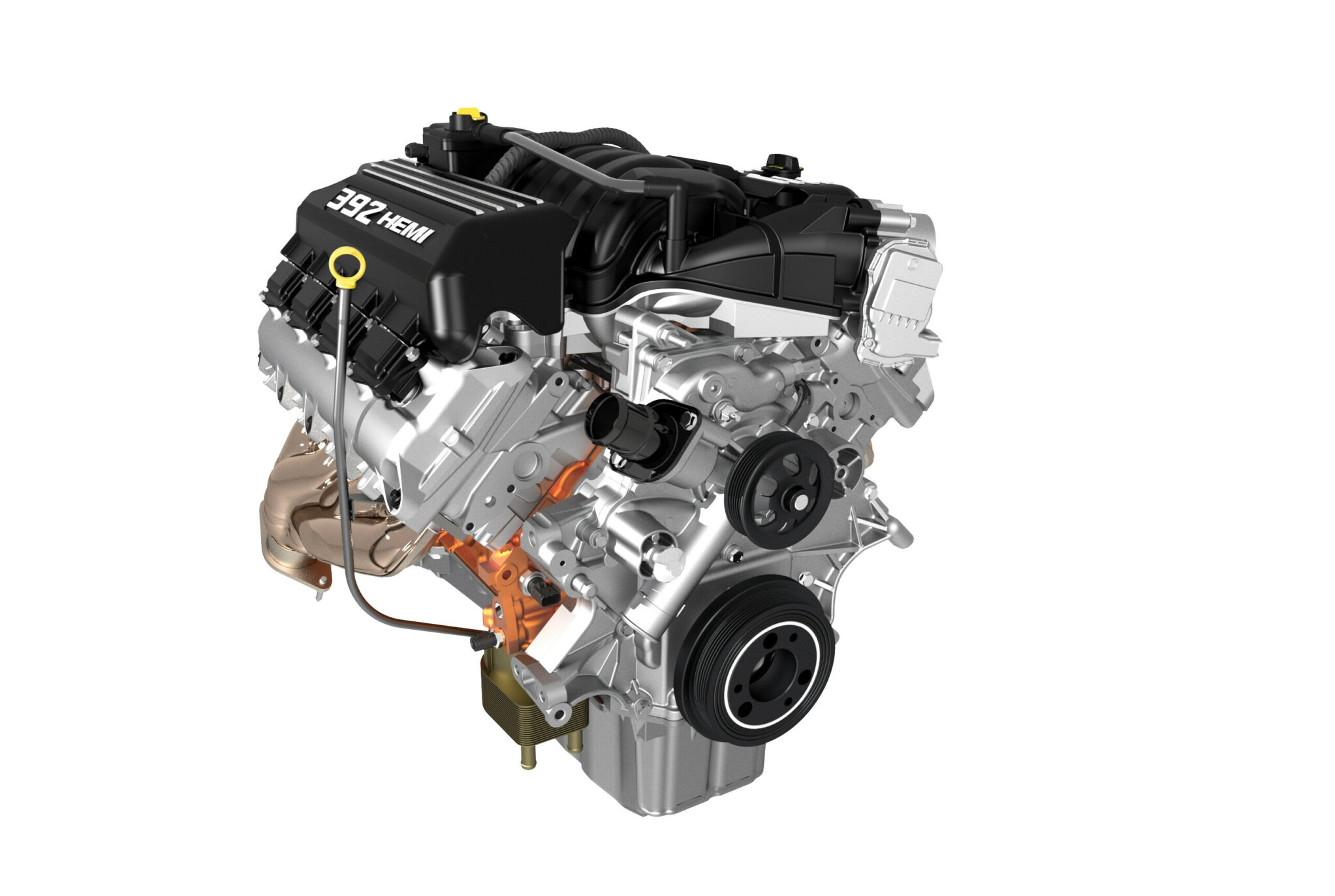
When Chrysler re-introduced the Hemi name in 2003, it certainly kicked Mopar fans into gear, but the introduction of the 470hp, 6.4-litre (392ci) SRT Hemi in 2011 really took things up a notch. This aspirated, iron-block pushrod V8 may not have traditional hemispherical combustion chambers like the 392 Hemis of old, but there is a stack of awesome engineering under the skin that makes it desirable.
The 6.4s run a 103.88mm bore, with a forged steel crank measuring 94.48mm in stroke. Interestingly, Chrysler lifted the 57mm cam tunnel to shorten pushrod length, which is regarded as a major plus by engineers. Powdered-metal rods and hypereutectic pistons with 10.9:1 compression round out the bottom end.
Factory 6.4-litre Hemis all run a 92mm drive-by-wire throttlebody, though aftermarket cable options are available. You’ll need a standalone computer to run the Hemi, though, as the stock Chrysler ECU is regarded as being too difficult to crack.
The bellhousing on Gen III Hemis is the same as old Mopar small-blocks except for the top centre bolt, while the starter motor can be switched between left or right sides to suit the recipient car. These engines can be had for under $14,000 (plus freight) in Australia, and the aftermarket parts supply in America is vast, so fitting one to an Aussie Mopar shouldn’t be a tough ask.
SPECS
Capacity: 392ci
Block material: Iron
Compression: 10.9:1
Power: 470hp
Torque: 470lb-ft
Blower: N/A
What’s hot
| What’s not
|
Mopar Performance Hellcat
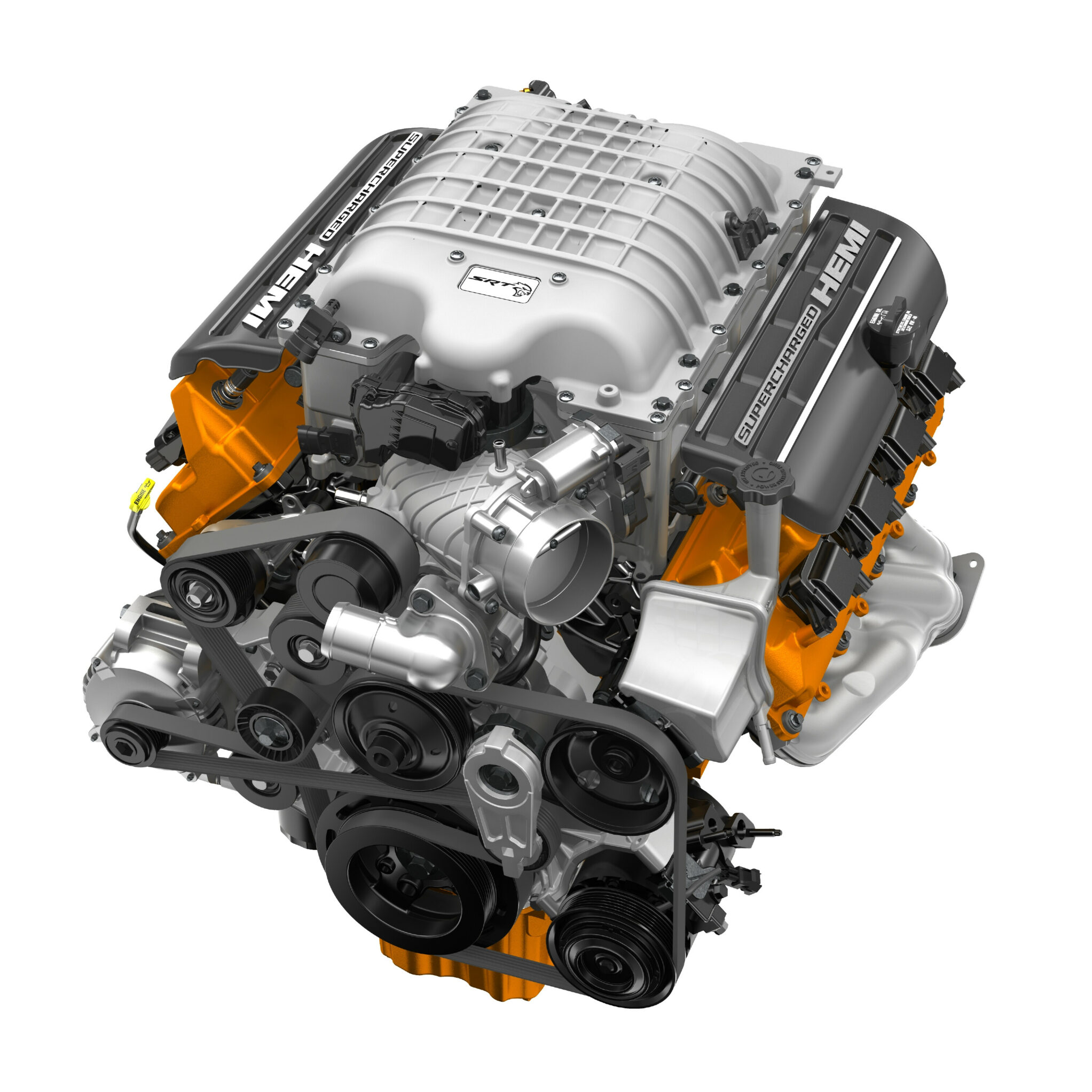
Packing 707hp from a supercharged 6.2-litre Hemi V8, Mopar’s Hellcat crate engine is a serious bit of kit. The block is an iron 90-degree 6.4-litre item from the Ram pick-ups, but knocked down to 6.2 litres with a forged steel crank running 90.9mm stroke, powder-forged conrods and forged aluminium slugs for boost-friendly 9.5:1 comp.
The 356-T6 alloy cylinder heads don’t actually have hemispherical chambers, but they do cop almost 12psi from that twin-screw 2.4-litre IHI blower.
Interestingly, all modern Hemi engines run twin sparkplugs per cylinder, and their cam phasing technology will require a powerful standalone ECU to run, potentially doubling the cost of the engine’s purchase.
One of the great strengths of the Hellcat engine is its ability to be fed more boost either by changing pulleys or upgrading to a larger blower. On top of this, there are countless internal upgrades available from the USA, but these are often subject to lead times in the post-COVID world.
At 230kg and costing approximately $35,000 (with wiring and control pack), the Hellcat is neither cheap nor small. Mopar will also sell you the spicier 807hp Redeye Hellcat Hemi, but it nudges $40K before freight.
SPECS
Capacity: 376ci
Block material: Iron
Compression: 9.5:1
Power: 707hp
Torque: 652lb-ft
Blower: IHI twin-screw 2.4L
What’s hot
| What’s not
|
Ford 7.3L Godzilla
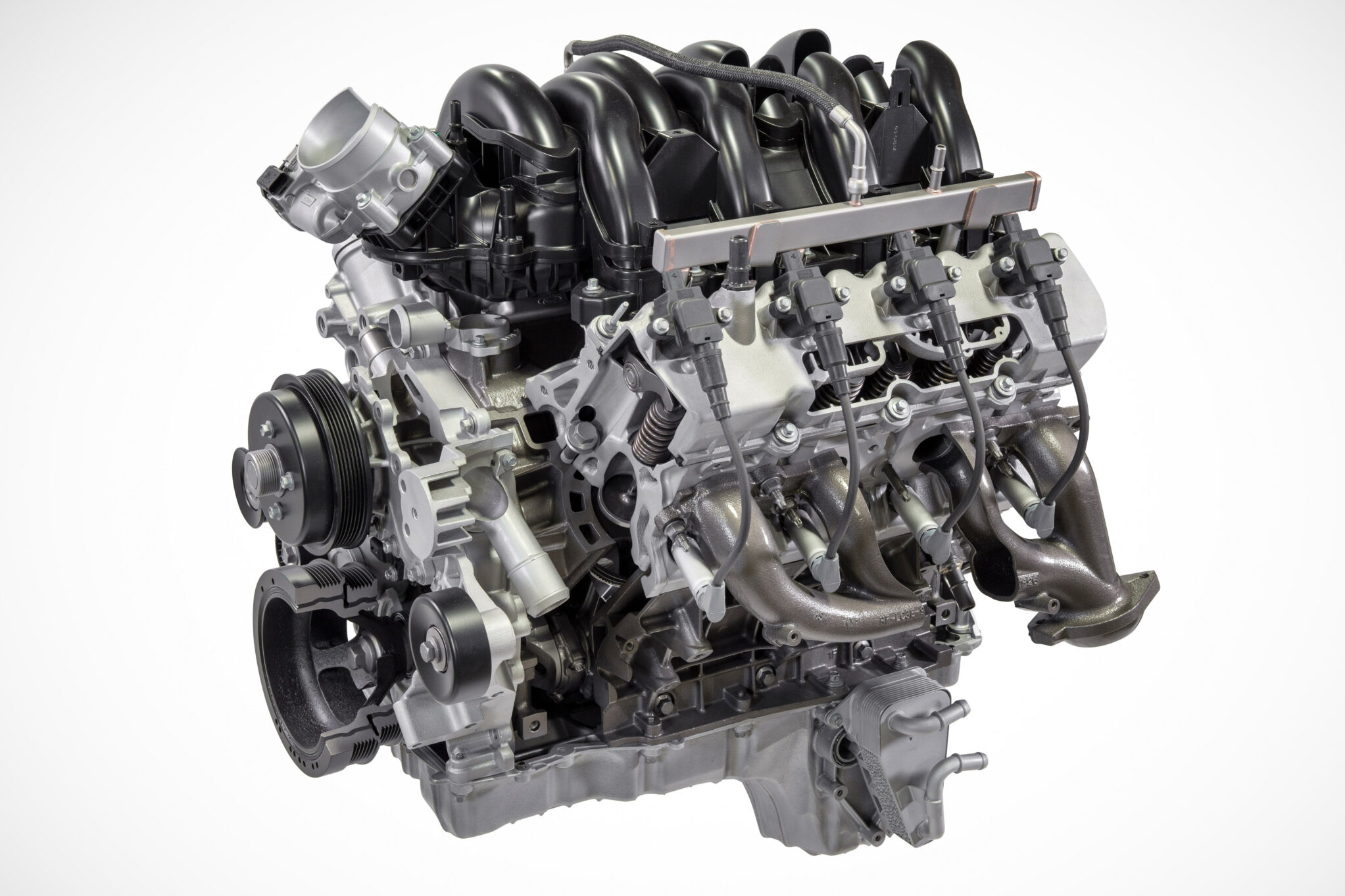
Ford’s latest big-little-block is causing huge waves thanks to its forged steel crank, six-bolt mains, deep-breathing heads and iron block, meaning it takes to forced-induction set-ups like a duck to water. Packing 445ci into a combo marginally larger than a 351 Windsor, this 263kg heavyweight is far easier to swap into Aussie Fords than the quad-cam Coyote, and its $14,000 (approximate) purchase price is also a good slice cheaper than the Mod Motor.
Things can get tricky with the 7.3’s chain-driven, variable-pressure oil pump, as it makes for a very tall package, but an external oil pump and aftermarket serpentine set-up can solve this issue. As the engine only debuted in 2020, the aftermarket is still rolling out oil pans and accessory drives to suit different chassis layouts, while most successful swaps use standalone aftermarket ECUs.
Transmission options are already plentiful, as the Godzilla uses the same bellhousing pattern as the overhead-cam Mod Motors. While Americans have been building all sorts of spicy Godzilla combos, we’ve seen Dandy Engines build a Harrop 2650-supercharged combo Down Under and make 1300hp, running eights in a full-weight XA Falcon sedan.
SPECS
Capacity: 445ci
Block material: Iron
Compression: 10.5:1
Power: 430hp
Torque: 475lb-ft
Blower: BYO
What’s hot
| What’s not
|
Ford Gen 3 Coyote 5.0L
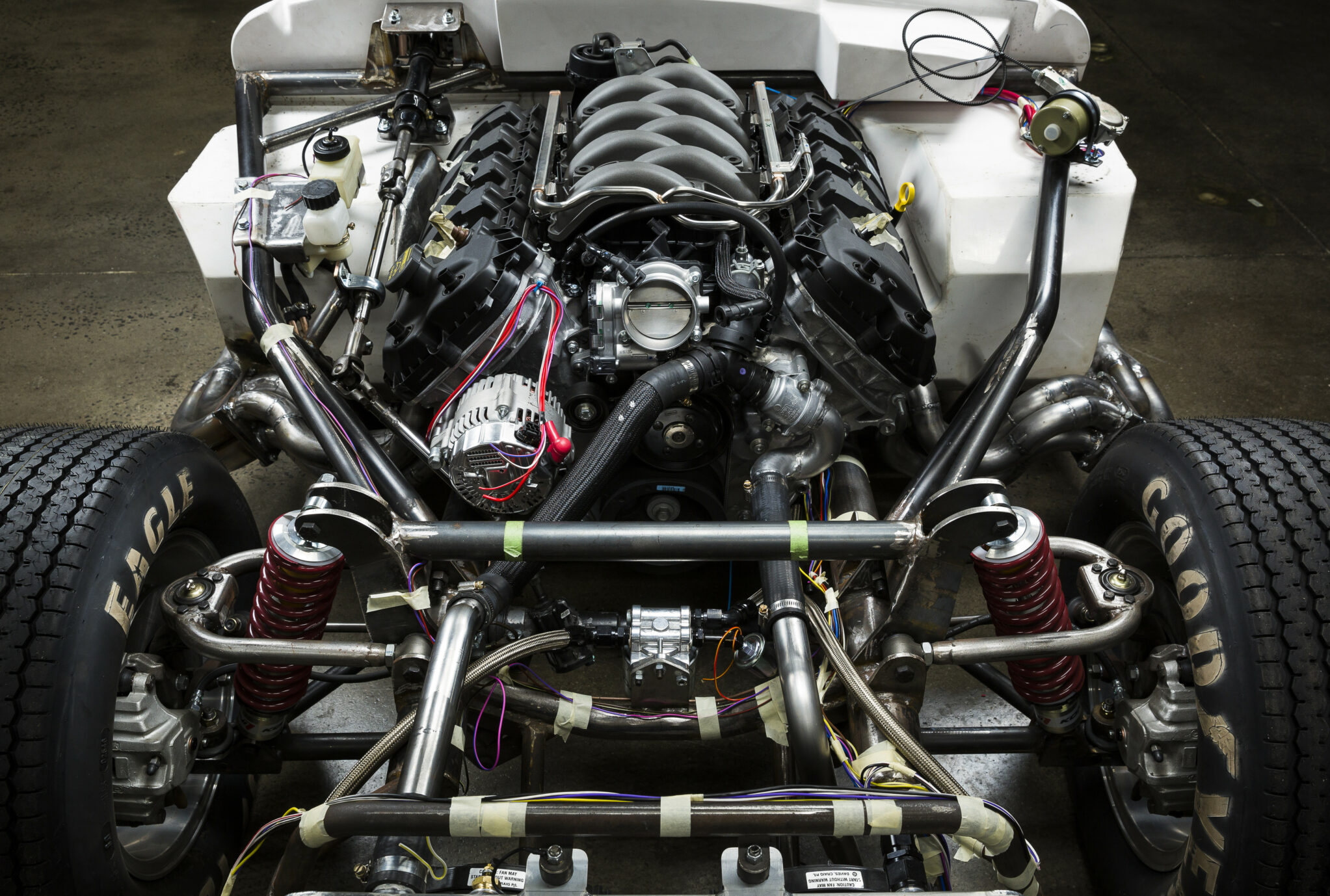
Ford’s overhead-cam Mod Motors are loved in the USA, but it wasn’t until the five-litre Coyote dropped that Aussies took notice. With 32-valve DOHC heads, the Gen 3 Coyote is silky smooth and loves to take boost thanks to a forged steel crank and steel rods, while long 12mm head bolts are used for better clamp load.
Making 460hp, the Gen 3 Coyotes sold as crate motors are high-tech items. They run both direct and port injection, along with twin independent variable cam timing (Ti-VCT), which means you’ll need the Ford Performance control pack or a very capable aftermarket standalone ECU to control it.
The other big struggle with the Coyote is its physical size. The twin overhead camshafts per bank make each cylinder twice the size of a traditional SBF head, and this makes fitting the Coyote a tough task in a classic Aussie Ford engine bay.
Thankfully, aftermarket support means mounts, oil pans and front-drive accessories are getting easier to source.
For cars with more generous bays, the Coyote is an excellent option, and now enjoys a lot more local support thanks to years of S550 Mustang sales. Proving just how rapid Coyotes can be, Empire Mechanical & Racing’s Mustang street car has now gone 8.1@170mph with a GTX55 turbocharger.
SPECS
Capacity: 302ci
Block material: Alloy
Compression: 12:1
Power: 460hp
Torque: 421lb-ft
Blower: N/A
What’s hot
| What’s not
|
Ford Performance Aluminator 5.2XS
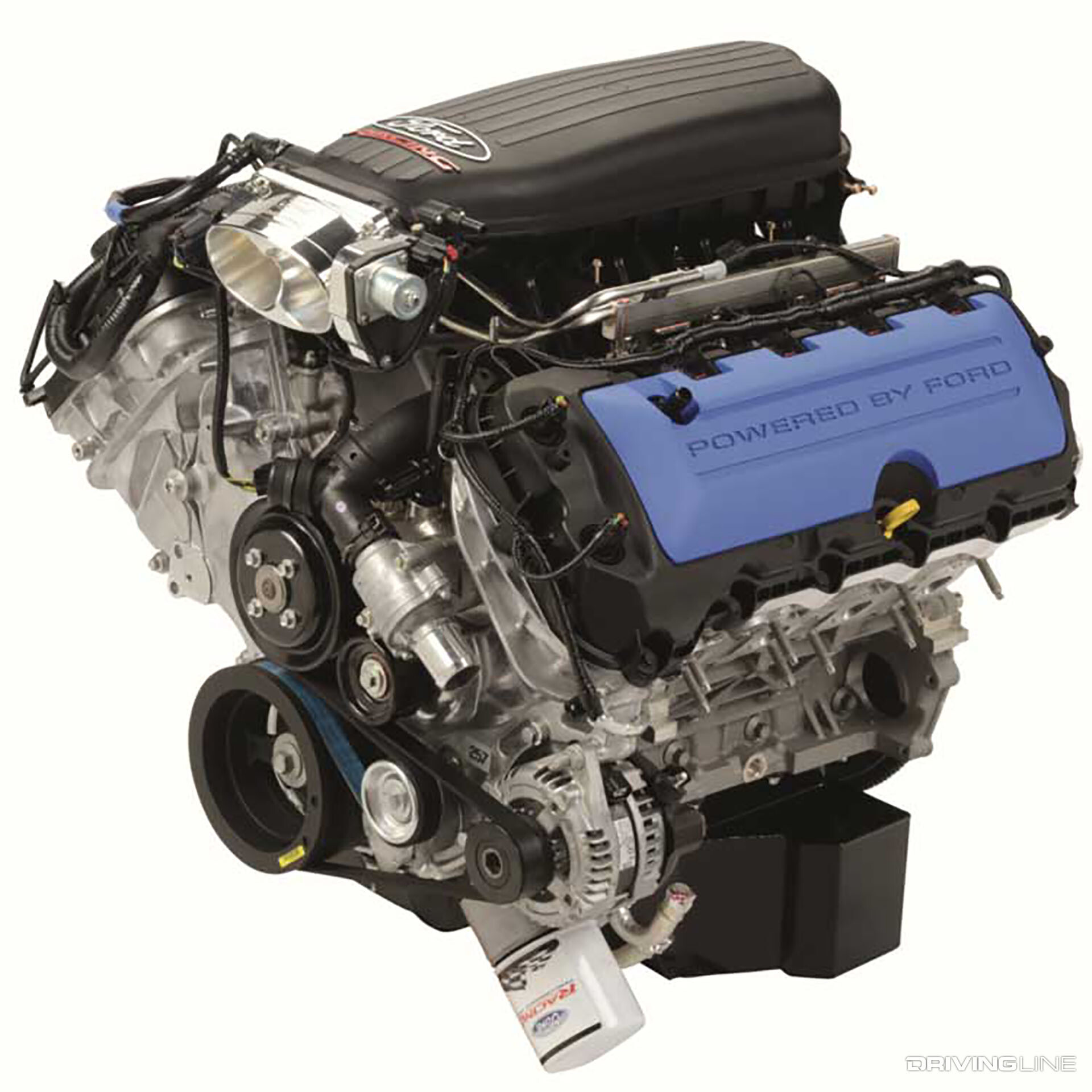
Designed as an aftermarket version of the high-revving 5.2-litre GT350 Mustang’s Voodoo engine but with a traditional cross-plane crankshaft, the Aluminator is one angry Coyote. Internal upgrades include Mahle forged slugs, Manley forged H-beam rods, ARP rod bolts, a forged steel crank and billet oil pump gears, while the block and CNC-ported cylinder heads are upgraded Shelby GT350 items.
Ford Performance also used the short-runner Cobra Jet intake with twin 65mm throttlebodies, paired with cams specially developed for the Aluminator that throw 270-degrees duration. Unlike other Coyote crate motors, the Aluminator also ships with the GT350 oil pan that features an integrated windage and sloshing baffles for improved oil control. The timing chains are also higher-performance items off the GT350, while the VCT phasers used to control the variable cam phasing are also unique to the Aluminator.
All up, the Aluminator XS produces 580hp at 7800rpm, and can do that for countless laps of a race track. Hand-built and used in pro touring and racing cars in America, the Aluminator XS is listed by Ford Performance as costing AU$40,000, plus freight from the USA. Thankfully, the XS shares its accessories with regular Coyote engines, so aftermarket oil pans, front drives, engine mounts, bellhousings, and headers for different-format chassis should fit.
SPECS
Capacity: 317ci
Block material: Alloy
Compression: 12:1
Power: 580hp
Torque: 445lb-ft
Blower: N/A
What’s hot
| What’s not
|
Ford Performance Eluminator
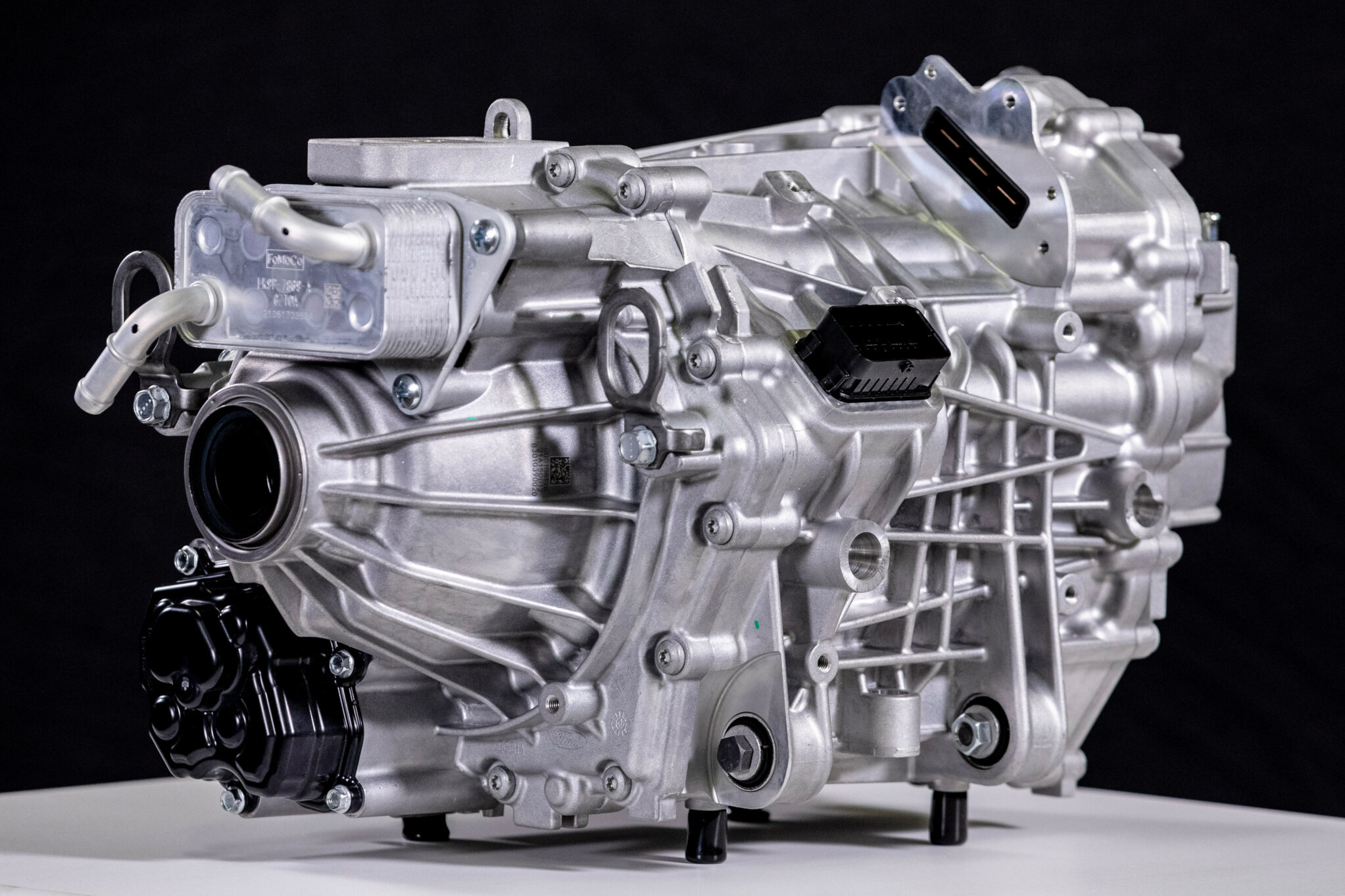
Like them or not, EV swaps are only going to increase in frequency in the future. GM and Ford have both thrown their hats in the ring with their announcement of EV crate packages, though Ford beat Chevy to the punch in getting a product to market.
For approximately $US5000, you can buy an Eluminator electric motor from Ford Performance. The 93kg, keg-sized motor normally found in the Mustang Mach-E GT SUV makes 281hp and 317lb-ft, and while that sounds a bit weak, remember that most performance EVs run a motor at each axle line.
Each Eluminator motor is sold brand new and includes the LV harness and connector, the traction inverter harness, and the vent tube assembly. But while the purchase price sounds cheap, it is missing a stack of important hardware to make an EV swap actually work, including the control system, battery and traction inverter.
As these swaps become more popular, the supporting electronics and batteries will come down in price, while the growing knowledge base will also make it easier to tackle these projects at home. Due to EVs using high current, these projects can be extremely dangerous for inexperienced amateurs to tackle.
SPECS
Capacity: Nope
Block material: Alloy
Compression: Huh?
Power: 281hp
Torque: 317lb-ft
Blower: Narp
What’s hot
| What’s not
|
LT1
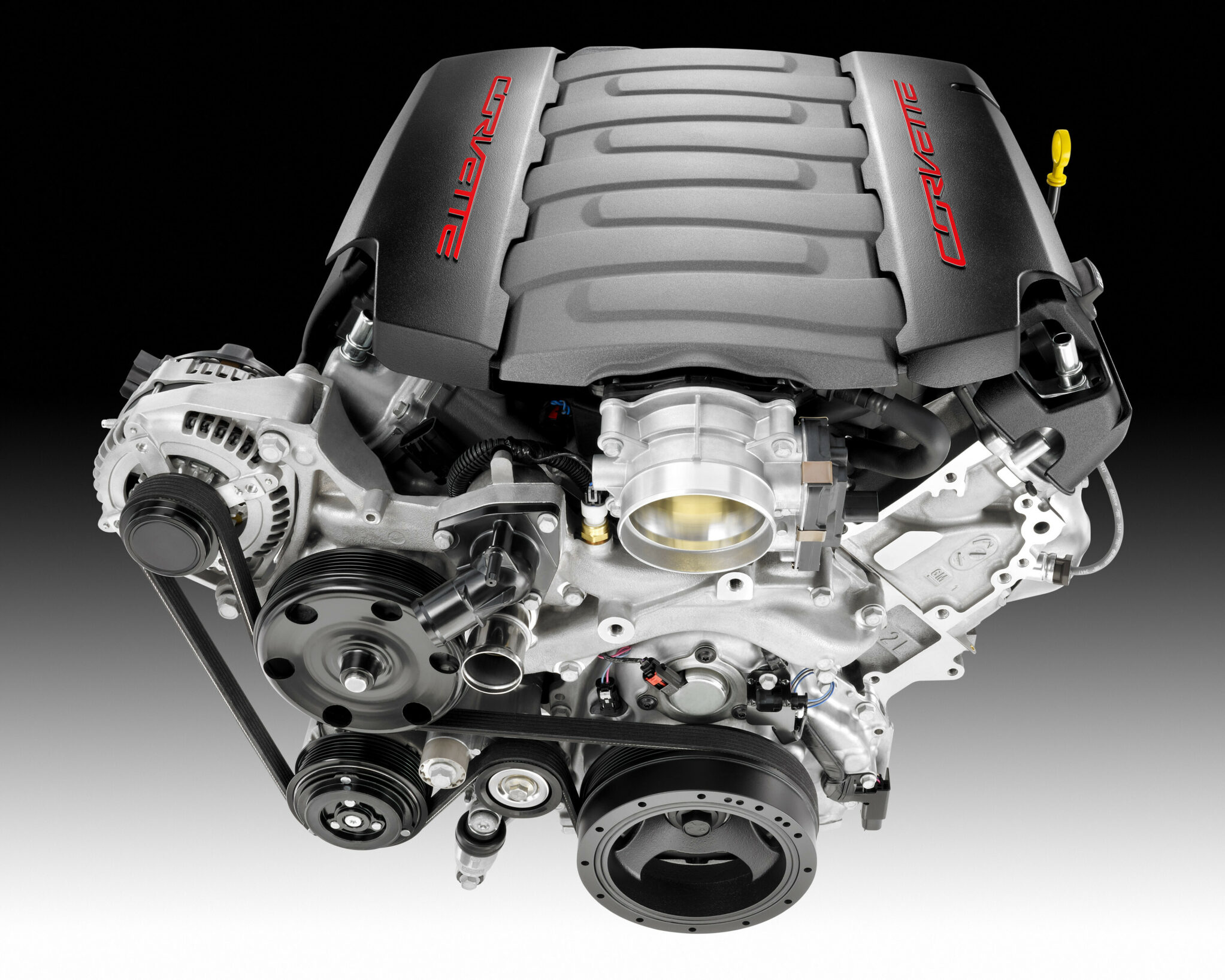
Introduced in 2013 with the new seventh-generation Corvette, the LT1 ushered in the all-new Gen V engine platform. While the LT-series engines look similar to the Gen III and IV LS motors, there are almost no carry-over parts used.
The LT1 retains a 6.2-litre capacity, alloy block construction, six-bolt mains, forged steel crank, powdered-metal rods and aluminium pistons, but compression has jumped to 11.5:1 thanks to GM’s introduction of direct-injection EFI. The LT retains a deadhead fuel supply of 58psi, but a mechanical pump on the engine ramps that pressure up for microscopically perfect fuel misting.
With better fuel control, the LT1 makes 460hp, though don’t expect every ECU that controls your LS to be able to handle the LT’s DI system. Also, without fuel washing the backs of valves, DI engines are known to carbon up with a lot of low-rpm cruising.
As GM is shifting from LS to LT engines in production vehicles, the aftermarket is coming out with more options for engine mounts, headers, camshafts and the like, as none of the LS parts cross over to LT. The LT1 is available in both dry-sump (Corvette) and wet sump (Camaro) formats, but the dry sump version requires a specific oil pan, so we reckon go for the Camaro-spec mill.
SPECS
Capacity: 376ci
Block material: Alloy
Compression: 11.5:1
Power: 460hp
Torque: 465lb-ft
Blower: N/A
What’s hot
| What’s not
|
LT4
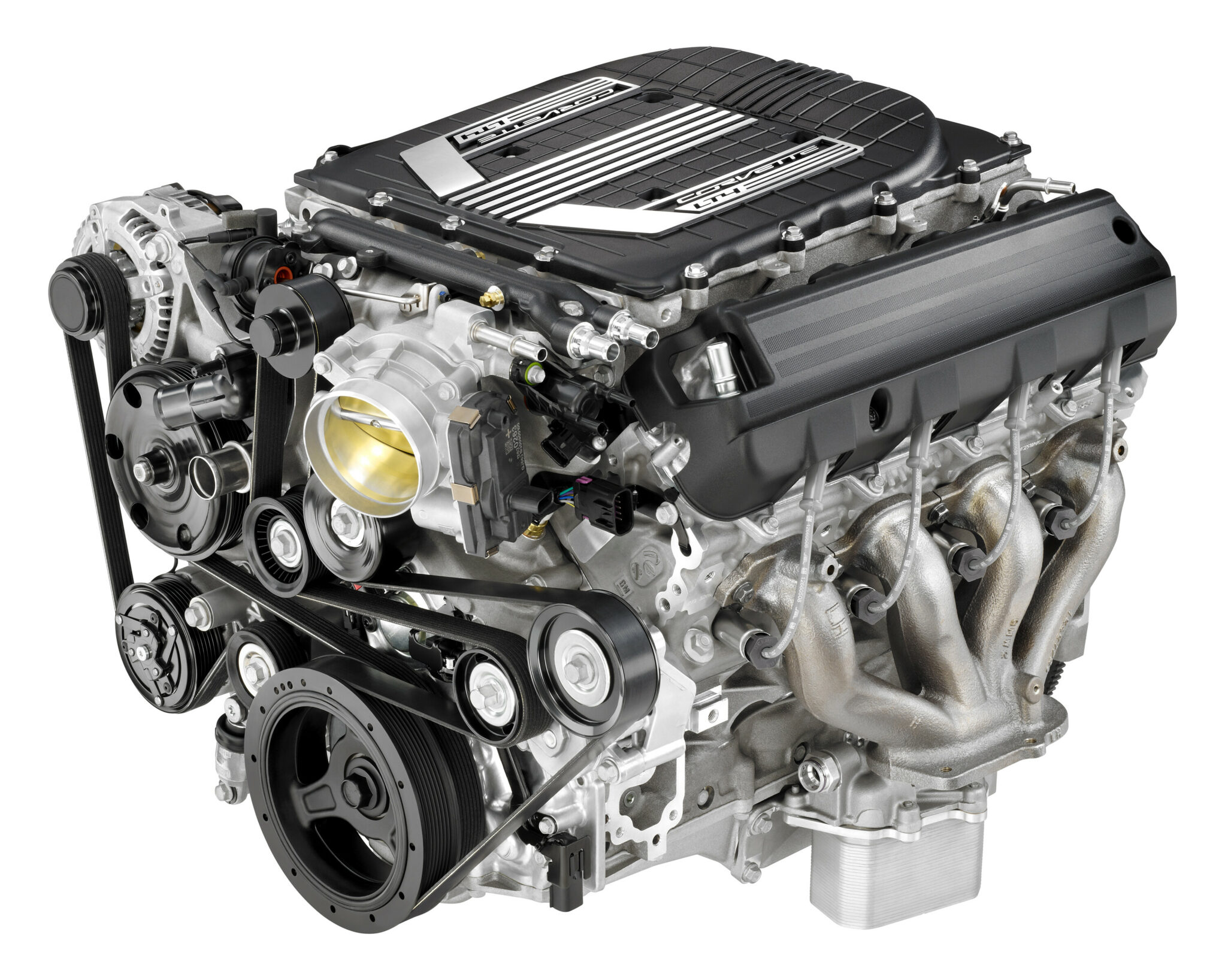
GM’s most powerful regular production engine, the 640hp LT4 shares much of its bones with its naturally aspirated Gen V predecessor, the LT1. Engine mount locations, bellhousing patterns and oil pan layouts remain the same between the two, but the LT4 cops a 1.7-litre Eaton supercharger between its heads.
At a list price of $23,000 (plus freight), the LT4 has taken over from the LSA as GM’s go-to crate motor for people wanting blown V8 power in their project car. As with the LT1, you’ll need a top-shelf ECU package to control the direct-injection, Active Fuel Management and variable oil pressure system on the dry-sump engines (a wet-sump variant is also available in crate form).
In standard form, the LT4 only runs 9.4psi from the R1740 supercharger, and there are excellent gains possible just by upping the boost before you get to fitting larger blowers. Thankfully, the direct-injection system doesn’t require a radically different fuel or ignition system.
With limited exposure to the LT engine family in Australia, there isn’t a massive range of parts available off the shelf. America has had these engines in production cars for nearly a decade now, so they have a plethora of upgrades available.
SPECS
Capacity: 376ci
Block material: Alloy
Compression: 10:1
Power: 640hp
Torque: 630lb-ft
Blower: Eaton R1740 TVS 1.7L
What’s hot
| What’s not
|
LSX376-B15
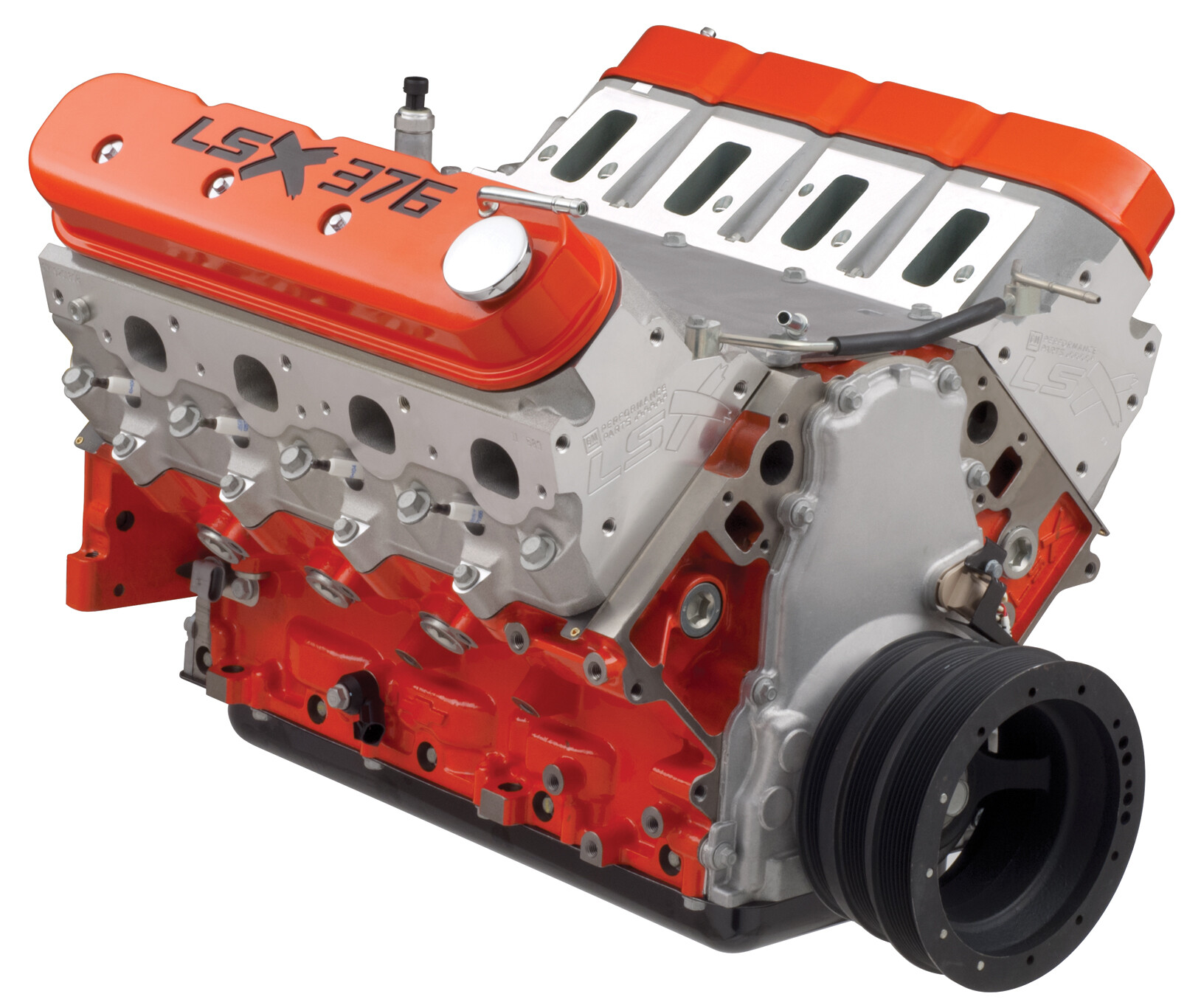
GM released the LSX376-B15 as a 6.2-litre iron-block LS ready to accept boost.
While the alloy-block 6.2s keep the weight down, they will eventually distort through the cylinders, as cylinder pressure from boosted combos pushes the soft alloy. The LSX376 fixes that with the iron block, six-bolt mains, forged internals and a boost-friendly 9:1 compression ratio. Up top, the 68cc, LS3-style rectangle-port heads have six-bolt fastening for much-improved clamping to resist distortion under boost.
These engines are sold as long motors, so they don’t come ‘ready to run’ like many other engines in this list. Once you’ve purchased one for approximately $18,000 (plus freight) you still need your power adder, front accessories and management, which can easily triple that investment.
Fortunately, the LSX376 runs regular LS oil pan, exhaust manifold and intake manifold formats, so one of the boost-ready iron blocks can be swapped in where another LS was. They are approximately 50kg heavier than an iron motor, though, which can affect spring rates.
With supply chain delays hitting engine builders, the strength of the LSX engines is that you can sidestep lead times for the internal components, though you don’t get to pick your exact combo like you can with an engine build.
SPECS
Capacity: 376ci
Block material: Iron
Compression: 9:1
Power: 473hp
Torque: 443lb-ft
Blower: N/A
What’s hot
| What’s not
|
LSX454
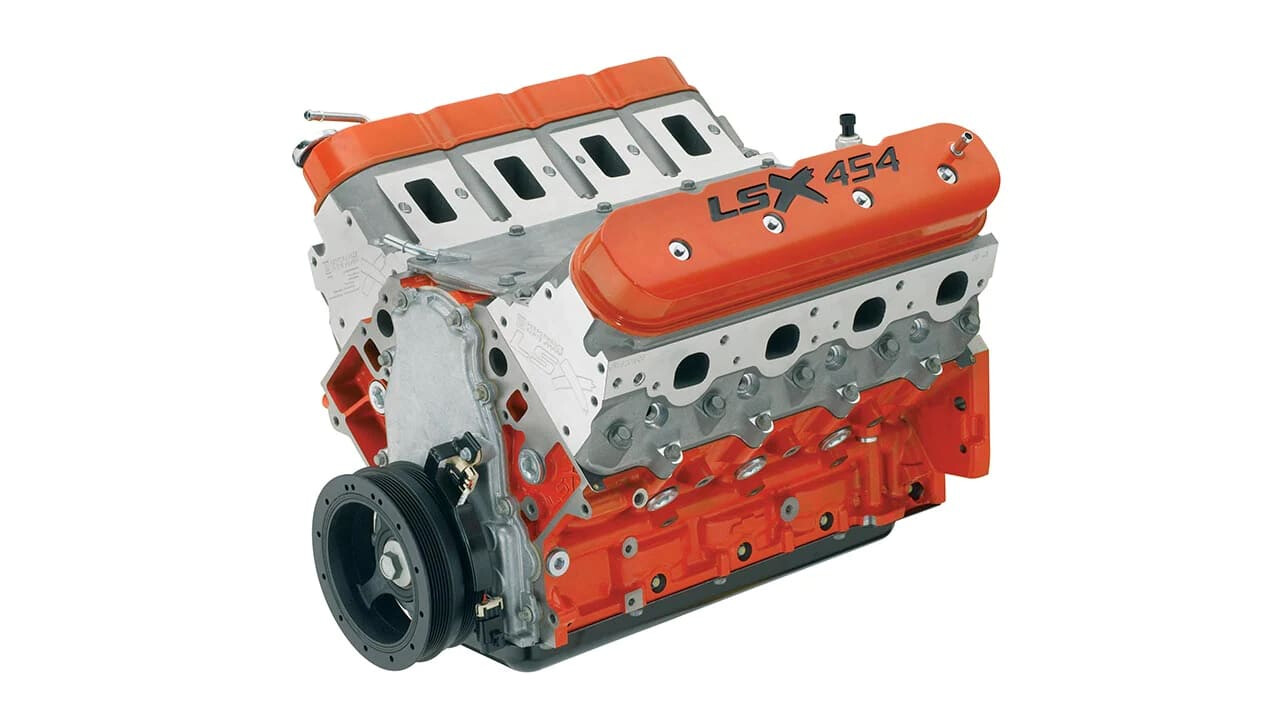
GM’s biggest-inch LS packs the most horsepower of any naturally aspirated Chevy crate LS. Originally the second most powerful motor since the race-spec LSX454R was discontinued, this street-oriented sibling provides big-block grunt in a small-block LS sizing.
The 106.3mm bore and 104.8mm stroke provides the 454ci capacity, while the iron LSX block, 4340 forged-steel crank and rods, forged-aluminium 11:1 pistons and six-bolt mains provide a tough bottom end. Up top, huge 70cc, square-port, six-bolt LS7 heads offer enormous clamping potential, making these engines attractive for blown set-ups running E85.
Those LS7-format heads do make it expensive to change intakes, as the square-port parts are much pricier than the more common rectangle-port heads found on Gen IV engines. Fortunately,the rest of the combo is largely the same as any other LS, though the LSX454 does run an eight-bolt crank flange like an LSA.
Retailing for around $25,000, the LSX454 is available from a bare long motor right up to a complete crate offering. As with many LSX products, the 454 was subject to production delays through 2020 and ’21.
While it is a tough set-up, it’s not quite as flexible as other platforms such as those from Dart, which offers options like priority mains cooling, a larger cam core and Ford mains. This means the LSX is limited to 1500-1800hp, compared to 3000hp for Dart and other hardcore blocks.
SPECS
Capacity: 454ci
Block material: Iron
Compression: 11:1
Power: 627hp
Torque: 586lb-ft
Blower: N/A
What's hot
| What's not
|
.
LS9
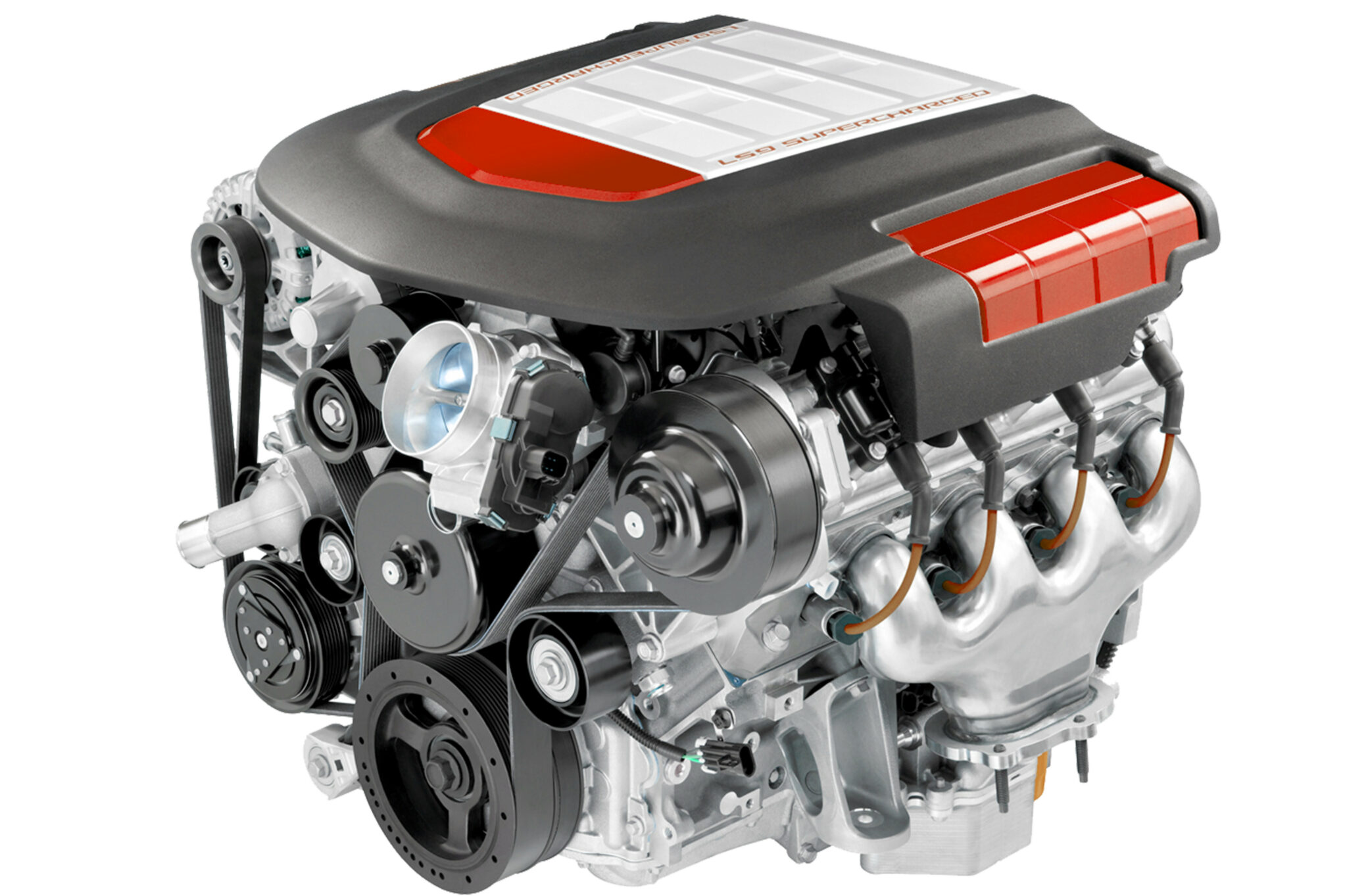
FROM 2009-2013, the hand-assembled, 638hp LS9 was the most powerful engine offered in a regular production GM car; even today, it remains one of the most exotic. Originally,Chevrolet Performance brought the former King of the Hill back as a crate long motor with forged titanium internals and a strengthened alloy block, but now offers it as a partial long motor.
This means you don’t get the Eaton 2300 four-lobe TVS blower, front accessory drive or a complete ignition or dry-sump system. However, even at around $27,000, it’s far cheaper than what the full crate LS9 cost several years ago.
Renowned for being the best alloy block for boost, the LS9 retains the compact, lightweight platform we love the LS for, but it can handle four-digit power figures and hard racing use. For racing classes or engineering regulations requiring a production engine to be retained (ruling out aftermarket blocks), the new LS9 long motors make a compelling case.
Drawbacks include the cost, the fact that the new LS9s are provided incomplete, and the unique crank pattern that means regular LS or LSA flywheels and flexplates won’t work. The cost for replacement internal parts is also prohibitive.
SPECS
Capacity: 376ci
Block material: Alloy
Compression: 9.1:1
Power: 638hp
Torque: 604lb-ft
Blower: Eaton 2300 (not included)
What's hot
| What's not
|
BIG BANGERS
The nastiest late-model production crate motors by GM, Ford and Chrysler all offer over 700hp with tyre-burning supercharged grunt. But all these engines cost a pretty penny, and supply is always tight.
The Bowtie boys’ baddest is the Gen V LT5 from the C7 ZR1 Corvette. This 6.2-litre, all-alloy engine boasts forged internals, 10:1 compression, and both direct and port injection to cope with the 14psi being supplied by the Eaton four-lobe 2650 supercharger. All up, it produces 755hp and cost over $26,000, though supplies are running low since GM ended its production in September 2021.
Ford’s S550-generation GT500 Shelby Mustang packs one of the company’s nastiest engines in the form of the 760hp 5.2-litre Predator V8. Now available as a crate motor through Ford Performance for approximately $34,000, this Eaton TVS2650-supercharged Mod Motor uses a reinforced alloy block, forged internals, 9.5:1 compression ratio and a water-to-air intercooler for longevity. At the time of print, Herrod Performance in Melbourne had one in stock, wearing a POA tag.
Mopar tops this list with its 807hp Redeye. Compared to the garden-variety 707hp Hellcat, the Redeye retains the 6.2-litre capacity and iron block, but it cops all-new forged internals and a 2.7-litre, twin-rotor blower, which bumps boost from 11psi up to 14psi. List price in America is over $36,000, plus ECU and front-drive accessories.
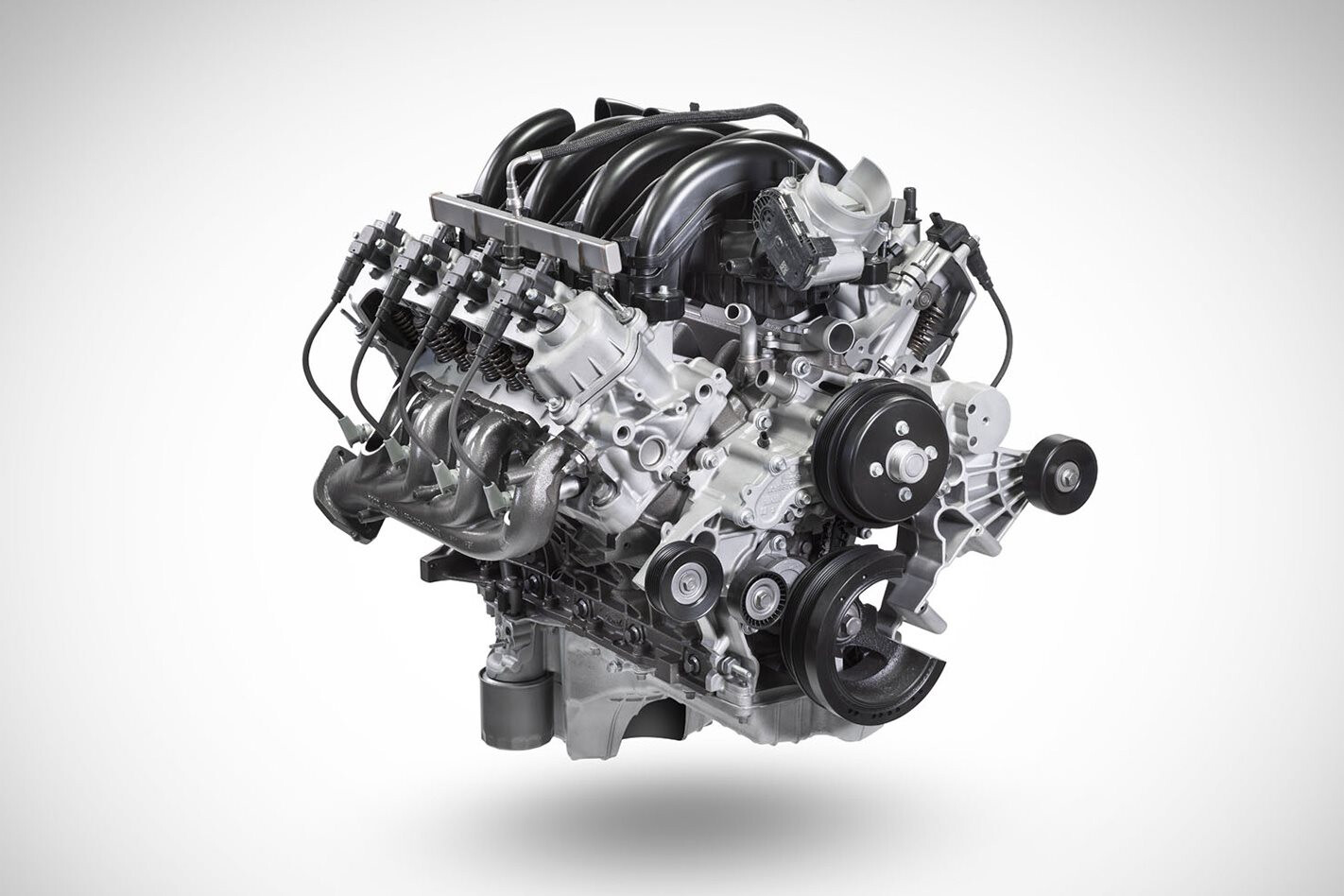
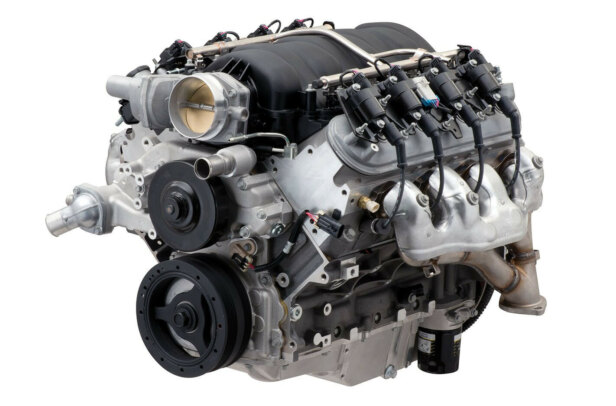
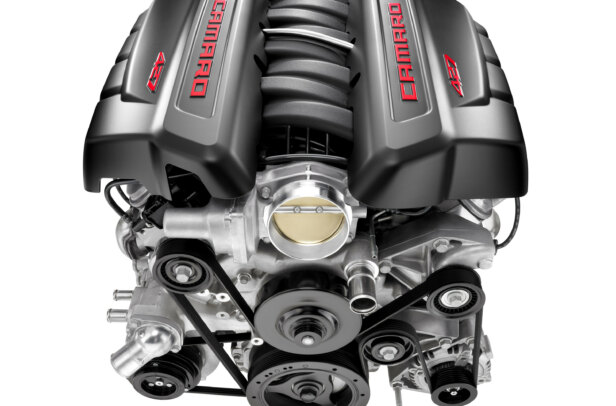
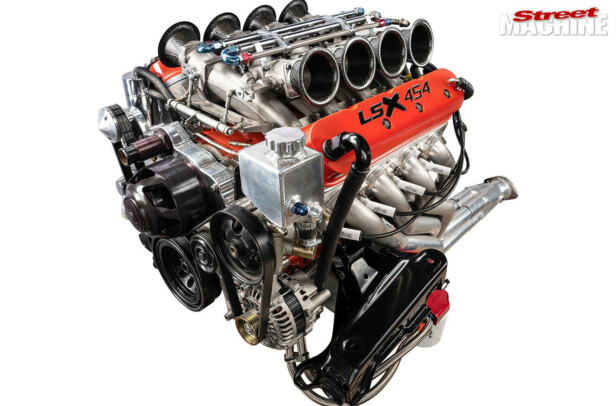
Comments